Looking for a reliable fishing rod that you can take on your travels? SIXT.VN offers a selection of Good Travel Fishing Rods perfect for your next adventure in Vietnam, ensuring you don’t miss out on the best fishing spots. With our services, you can enjoy fishing trips without worrying about transporting bulky equipment.
Unlock unforgettable fishing experiences with a lightweight travel rod, portable fishing rod, and multi-piece rod!
1. What Should You Consider When Choosing a Good Travel Fishing Rod?
When selecting a good travel fishing rod, consider factors like the rod’s disassembled size, the number of pieces, the type of rod case, and how you plan to transport it. Think about whether a telescoping rod is suitable and what kind of fish you expect to catch. Travel rods typically come in 2 to 5 pieces, with telescoping options also available. If you plan to fit the rod in a suitcase, a higher number of pieces will result in a smaller footprint. Alternatively, if you intend to carry it separately, you may have more options. For added protection during transit, especially with TSA, consider using a hard case. A rod wrap might suffice if the rod is tucked inside another hard case suitcase.
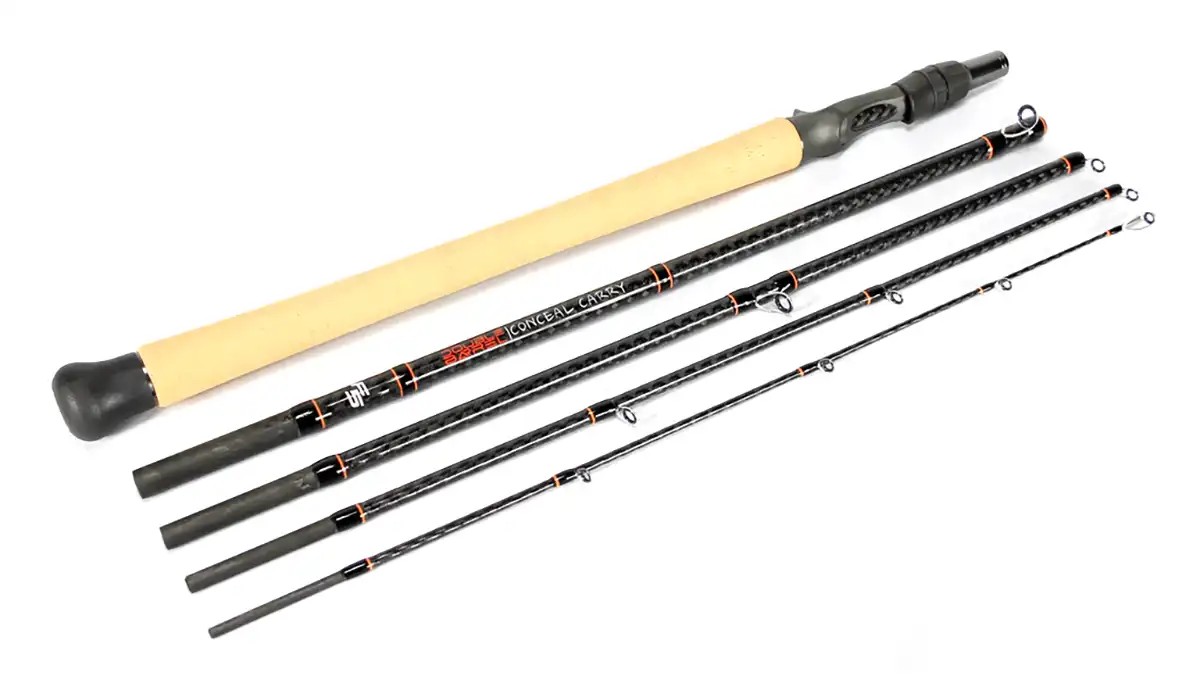 Angler ready for fishing travel with his equipment
Angler ready for fishing travel with his equipment
2. What Are Some Top Picks for Good Travel Fishing Rods?
Here are some top picks for good travel fishing rods, each offering unique features and benefits:
2.1 Shimano Zodias Pack Rod
The Shimano Zodias Pack Rod stands out as a high-end bass travel rod, retaining the quality of the original Zodias line in a 5-piece design. Compacting down to 19 inches when packed, it’s incredibly portable. When assembled, it performs like a high-quality one-piece rod. The 5-piece construction ensures a more uniform bend than a 2-piece model. It features a CI4+ reel seat for lightweight strength and a full carbon monocoque grip for enhanced sensitivity. Hi-Power X construction reinforces the blank, allowing you to confidently lean into fish. It’s a top-notch travel rod that doesn’t compromise on performance.
You can find it at:
2.2 F5 Double Barrel Concealed Carry
F5 Custom Rods offers the Double Barrel Concealed Carry, exceptional packable travel big swimbait rods. These custom-made 5-piece rods feature extra-long cork handles and high-quality rod blanks. The ferrule system provides a strong, uniform rod capable of handling 2-6 ounce swimbaits with ease. Despite being in 5 pieces, it easily handles big baits like the Slide Swimmer. The kit packs down to just 24 inches, making it convenient to carry in any travel bag.
These rods are available at F5 Custom Rods.
2.3 St. Croix Trout Series Pack Rod
The St. Croix Trout Series Pack Rod is perfect for adventurers needing a light, packable trout rod for remote locations. Ideal for trout, bluegill, crappie, and smallmouth, this beautifully built 3-piece rod weighs only 2.9 ounces and compacts easily into a backpack. Paired with a small 1000 spinning reel and 4-pound line, it effortlessly throws small baits and has a nice backbone for its weight.
You can purchase it from:
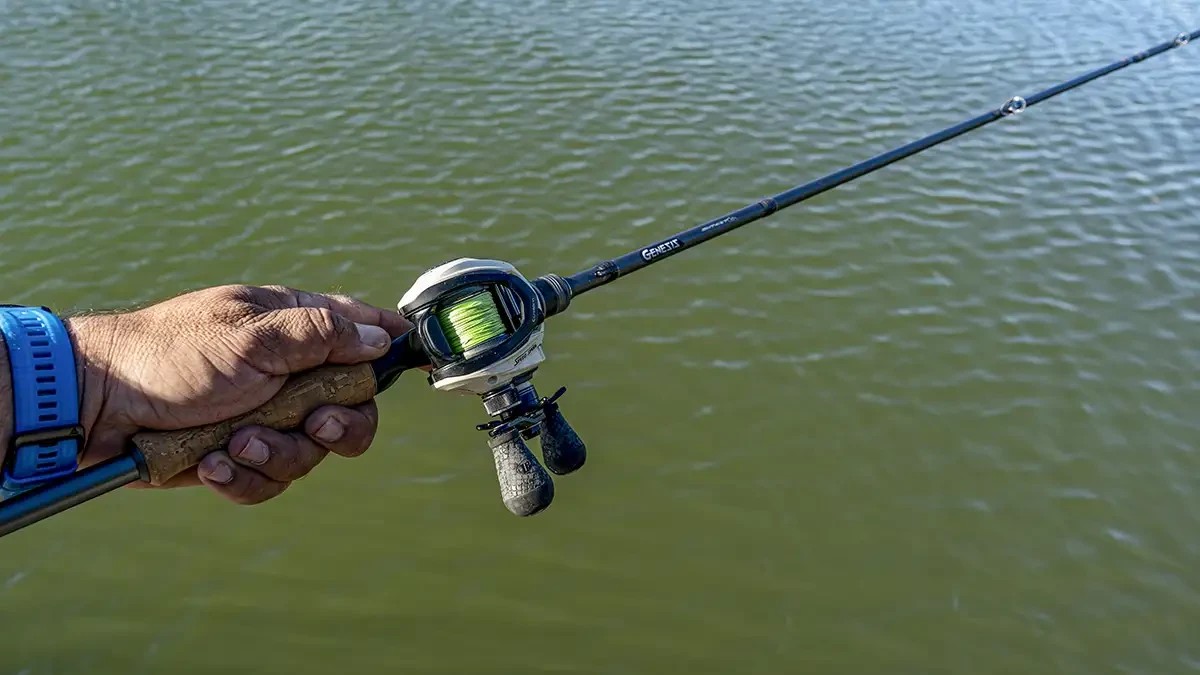 Angler enjoys fishing in a tranquil stream
Angler enjoys fishing in a tranquil stream
2.4 Ark Rods Genesis Rods
The Ark Rods Genesis is a durable and sensitive two-piece travel rod that comes with a padded bag. It has been tested extensively in various locations, catching fish in diverse conditions. The narrow blanks offer excellent performance, making it suitable for flipping, frogging, spinnerbait fishing, jigging, cranking, and topwater techniques.
Available at:
2.5 Shimano Convergence Travel Rod
The Shimano Convergence Travel Rod is a versatile 7-foot, 4-piece rod suitable for various species and lures in the 1/4 to 3/4 ounce range. It breaks down to 25 inches, fitting easily into most bags, and includes a hard case with a shoulder strap. Well-made and compatible with a variety of reels, it’s an excellent all-around travel rod.
You can find it at:
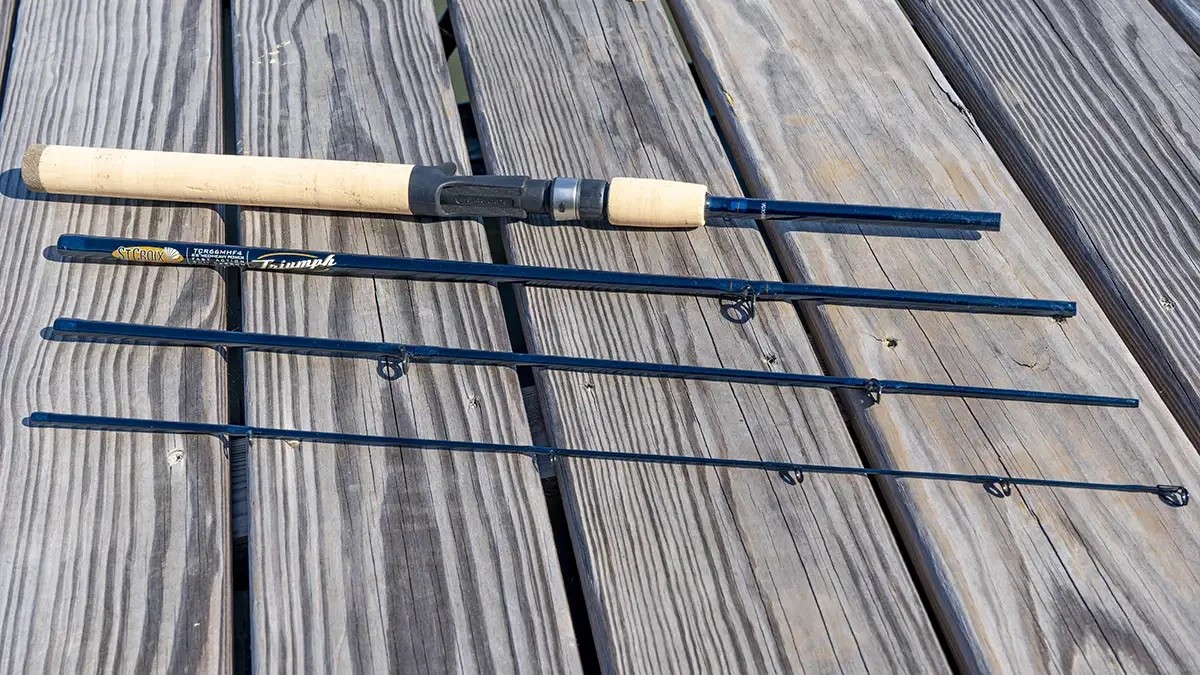 Angler casting a line with a travel fishing rod
Angler casting a line with a travel fishing rod
2.6 St. Croix Triumph Travel Rod
The St. Croix Triumph Travel Rod is a workhorse, perfect for various purposes. Its 6-foot, 6-inch size is ideal for tight quarters, making it great for small streams. With a small form factor of 24 inches, it’s a great pack rod for your vehicle or bag on long trips. This strong, sensitive, and light rod is a fantastic travel version of the popular Triumph line.
Available at:
2.7 Daiwa Ardito Travel Rod
The Daiwa Ardito Travel Rod is a high-end option with a convenient travel form factor. It comes with a hard case and breaks down to 30 inches (32 in its case). Featuring a V-flex ferrule joint system, it allows for quick assembly and disassembly. The rod has a high-modulus blank, Fuji Aluminum Oxide guides, and a split Eva grip, making it a high-quality choice for baitcasters.
You can purchase it from:
3. Are Telescoping Rods and Combos Good for Travel?
Telescoping rods and combos offer convenient travel options, especially for spontaneous fishing trips. The Daiwa Travel Combo includes a good reel and a telescoping rod in a sling carry bag. It compacts to 26 inches, making it ideal for car or plane travel. The 7-foot, 2-inch Medium power fast action rod is reliable, and the 2-bearing Daiwa Crossfire LT 2500 reel performs smoothly. This combo provides a quick and easy solution without the hassle of pairing separate rods and reels.
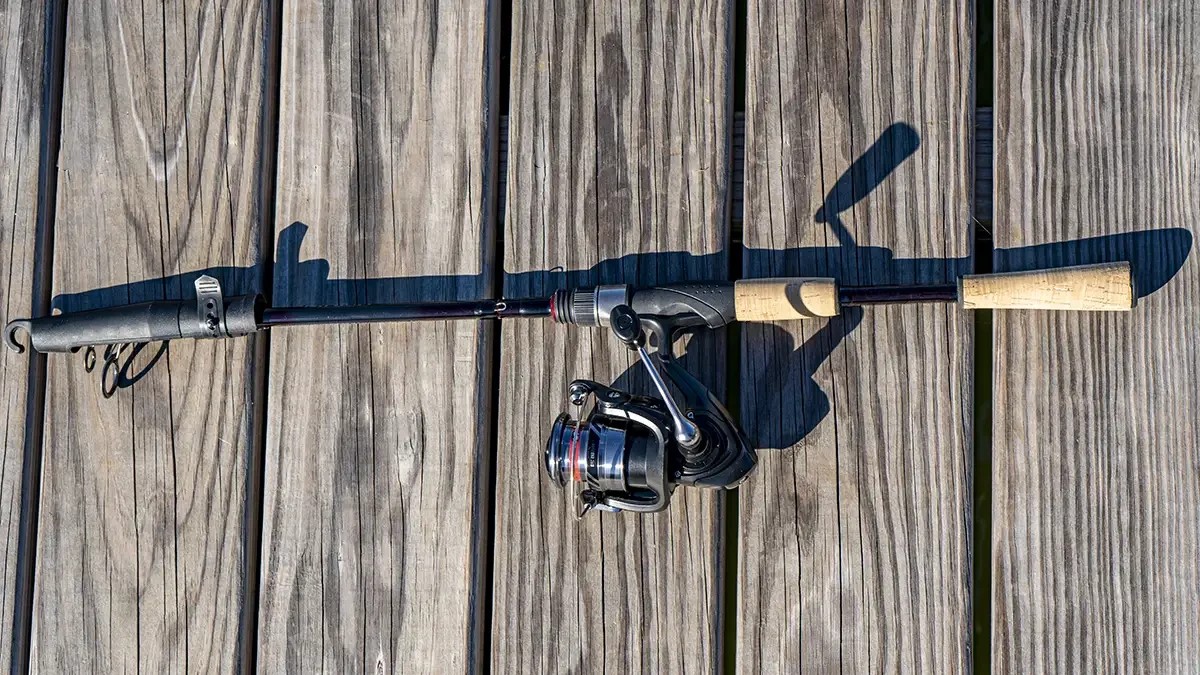 Close-up of a telescoping fishing rod mechanism
Close-up of a telescoping fishing rod mechanism
3.1 BnM Poles Little Mighty Telescoping Rod
The BnM Poles Little Mighty Telescoping Rod extends to 20 feet but breaks down to just 22 inches. This rod is excellent for crappie and bluegill fishing. Extend the smaller sections first to prevent issues. Despite its length, it’s fun to use once you get the hang of maneuvering it with a fish on the end.
Available at:
3.2 Zebco 33 Spincast Telescopic Combo
The Zebco 33 Spincast Telescopic Combo is an affordable option for catching panfish around a campsite or dock. While not suitable for larger fish, it’s perfect for catching plenty of panfish. Be cautious with bigger fish due to the rod’s flexibility and line positioning.
You can find it at:
4. What Types of Good Travel Fishing Rods Are Available?
Consider different types of rods such as spinning, casting, and telescoping models. There are also specialized options like travel fly rods, swimbait rods, and trout or panfish rods. If you prefer light lures and lines, a spinning travel rod may be best. For larger fish, a baitcasting travel rod is more suitable. Specialty rods are ideal for specific techniques like jigging for crappie or casting swimbaits for trophy bass.
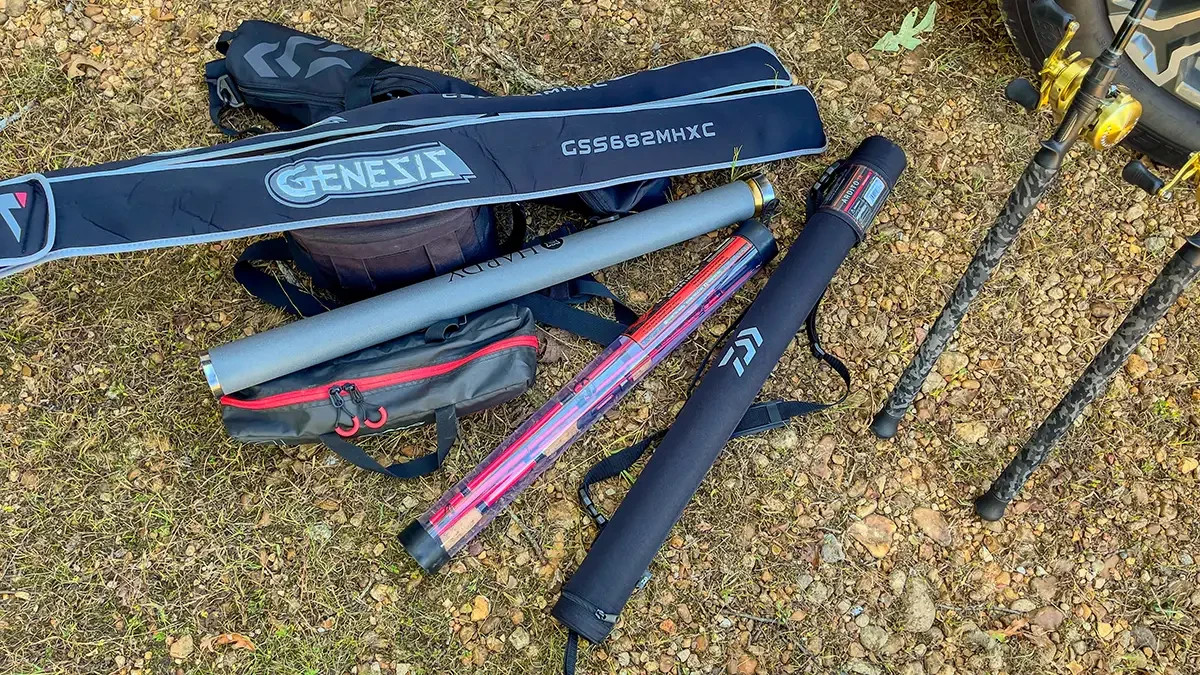 Selection of various travel fishing rods
Selection of various travel fishing rods
5. Why Consider Telescoping Rods for Travel?
Telescoping rods offer a convenient option for spontaneous fishing, allowing you to quickly explore nearby waters. Some anglers keep these rods in their vehicles for impromptu fishing trips during travels, lunch breaks, or after work. While traditionally lower in quality, newer models provide viable options for both bass and panfish.
6. Is a Travel Combo a Good Option?
Travel rods and reel combos, especially telescoping options, can be practical. Higher-quality multi-piece travel rods with decent spinning reels are also available. For anglers who prioritize top-notch equipment, selecting the best rod and reel separately is preferable. However, a reasonably priced telescoping combo can quickly get you fishing in unexpected hotspots.
7. Do You Need a Travel Rod Case, Bag, or Roll?
Protecting your travel rod during transit is essential. Travel rods typically come with a hard case, roll, or bag. Hard cases offer robust protection, especially when carrying rods separately or storing them in a vehicle. Rod rolls are cloth sleeves with individual pockets, ideal for fitting rods into other travel bags. Padded foam bags provide added protection and prevent pieces from falling out.
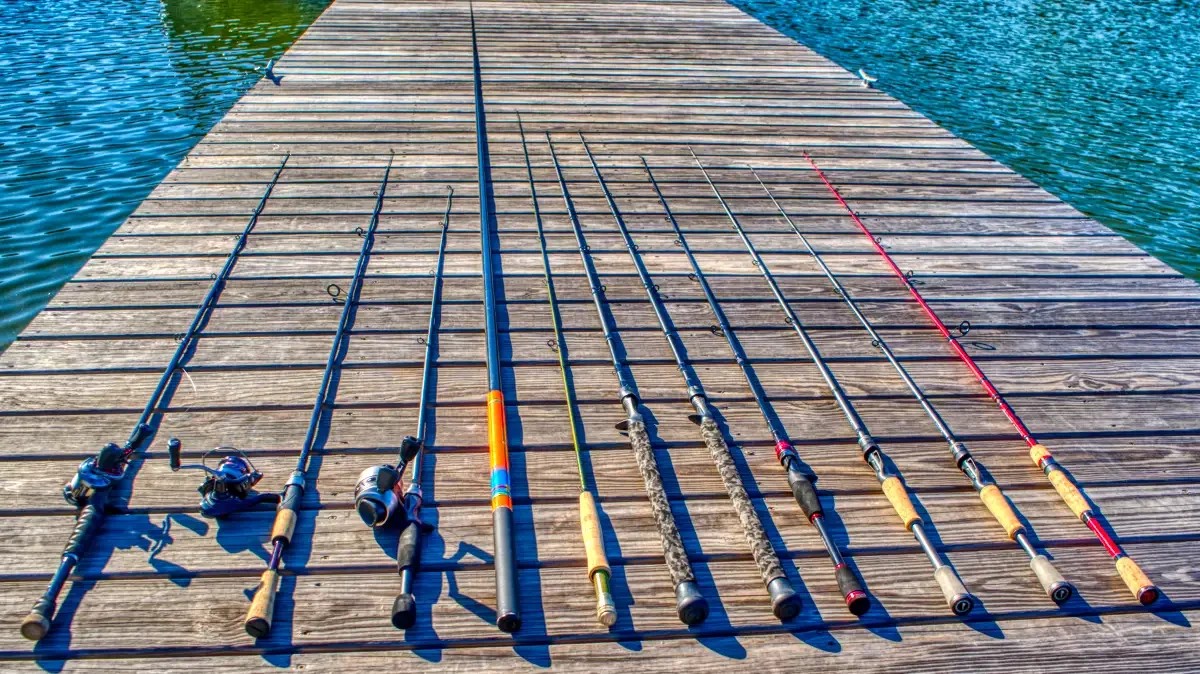 Different types of travel fishing rod cases and bags
Different types of travel fishing rod cases and bags
8. Which Brands Make the Best Good Travel Fishing Rods?
Top freshwater travel rod makers often align with leading rod manufacturers. Brands like Daiwa, Shimano, St. Croix, Megabass, and Ark Rods offer excellent travel rod options. Other notable brands include Fenwick, Favorite, Bass Pro, and BnM Poles.
Here are some reviewed and recommended travel rod brands:
- Shimano
- Daiwa
- St. Croix
- Megabass
- Ark Rods
- Fenwick
- Sixgill
- Bass Pro
- Favorite Fishing
- B’n’M Poles
- Ugly Stik
- Hardy
- Orvis
9. What Are the Benefits of Using a Good Travel Fishing Rod?
A good travel fishing rod offers numerous benefits for anglers on the go:
- Portability: Easily packable for travel, fitting into suitcases or backpacks.
- Convenience: Allows fishing opportunities during trips without the hassle of transporting full-size rods.
- Versatility: Suitable for various fishing environments and species.
- Protection: Travel cases and bags protect the rod from damage during transit.
- Quality: High-end travel rods offer performance comparable to one-piece rods.
10. How Do You Choose the Right Travel Rod for Your Trip?
Choosing the right travel rod depends on your specific needs:
- Fishing Type: Consider the species you plan to target and the techniques you’ll use.
- Travel Method: Ensure the rod fits within your luggage or can be easily carried.
- Rod Material: Graphite rods are lightweight and sensitive, while composite rods offer a balance of sensitivity and power.
- Action and Power: Choose the appropriate action and power based on the lures and fish size.
- Number of Pieces: More pieces result in a smaller footprint but can affect rod action.
11. What Are the Key Features of a Good Travel Fishing Rod?
Key features of a good travel fishing rod include:
- Compact Size: Breaks down into small, manageable pieces.
- Durable Construction: Made from high-quality materials for longevity.
- Sensitive Blank: Provides good feel for detecting bites.
- Quality Guides: Ensure smooth line flow and reduce friction.
- Comfortable Grip: Allows for extended use without fatigue.
- Protective Case: Keeps the rod safe during travel.
12. How Can You Maintain Your Good Travel Fishing Rod?
Proper maintenance ensures your travel fishing rod lasts longer and performs better:
- Rinse After Use: Clean the rod with fresh water after each use to remove salt, dirt, and debris.
- Dry Thoroughly: Ensure all parts are completely dry before storing.
- Check Guides: Inspect the guides for cracks or damage and replace if necessary.
- Lubricate Ferrules: Apply a small amount of ferrule wax to prevent sticking.
- Store Properly: Store the rod in its case or bag in a cool, dry place.
13. What Are Some Popular Fishing Destinations in Vietnam?
Vietnam offers a variety of excellent fishing destinations:
- Halong Bay: Known for its stunning scenery and diverse marine life.
- Phu Quoc Island: Offers both freshwater and saltwater fishing opportunities.
- Nha Trang: A popular coastal city with abundant fishing spots.
- Mekong Delta: Features extensive river systems teeming with fish.
- Danang: Renowned for its beautiful beaches and fishing charters.
According to the Vietnam National Administration of Tourism, these destinations are known for their rich aquatic biodiversity and offer unique fishing experiences.
14. How Can SIXT.VN Enhance Your Fishing Trip to Vietnam?
SIXT.VN provides comprehensive services to make your fishing trip to Vietnam seamless:
- Airport Transfers: Reliable and comfortable transportation from the airport to your accommodation.
- Hotel Bookings: Wide selection of hotels to suit your budget and preferences.
- Tour Packages: Customized fishing tour packages to explore the best spots.
- Transportation: Convenient car rental options for independent travel.
- Local Expertise: Valuable insights and recommendations for fishing locations and techniques.
According to a report by the General Statistics Office of Vietnam, tourism services like those offered by SIXT.VN significantly contribute to the convenience and satisfaction of travelers visiting Vietnam.
15. How Does the Length of a Good Travel Fishing Rod Affect Performance?
The length of a travel fishing rod significantly impacts its performance:
- Longer Rods: Offer increased casting distance and better leverage for fighting larger fish. Ideal for open waters.
- Shorter Rods: Provide greater accuracy and control in tight spaces, such as streams and rivers. Easier to maneuver in dense cover.
Choose the length that best suits your fishing environment and target species.
16. What Are the Best Materials for a Good Travel Fishing Rod?
The materials used in a travel fishing rod influence its weight, sensitivity, and durability:
- Graphite: Lightweight and highly sensitive, ideal for detecting subtle bites. Suitable for finesse techniques.
- Fiberglass: More durable and forgiving than graphite, offering greater resistance to breakage. Better for beginners.
- Composite: Combines graphite and fiberglass for a balance of sensitivity and power. Versatile for various fishing applications.
Select the material that aligns with your fishing style and the types of fish you pursue.
17. What Role Does the Action of a Good Travel Fishing Rod Play?
The action of a fishing rod refers to how much of the rod bends under pressure:
- Fast Action: Bends primarily at the tip, providing high sensitivity and quick hooksets. Best for techniques requiring immediate response.
- Moderate Action: Bends more towards the middle, offering a balance of sensitivity and power. Suitable for a wide range of applications.
- Slow Action: Bends along most of the rod length, providing maximum casting distance and shock absorption. Ideal for crankbaits and live bait.
Choose the action that complements your preferred fishing techniques.
18. How Does the Power of a Good Travel Fishing Rod Influence Fishing?
The power of a fishing rod refers to its resistance to bending:
- Light Power: Designed for small lures and light lines, suitable for panfish and trout.
- Medium Power: Versatile for a wide range of lures and fish sizes, ideal for bass and walleye.
- Heavy Power: Built for larger lures and heavier lines, suitable for big game fish like pike and musky.
Select the power that matches the size of fish you intend to catch and the lures you’ll be using.
19. What Are Some Essential Accessories for Your Good Travel Fishing Rod?
Essential accessories for your travel fishing rod include:
- Rod Case or Bag: Protects the rod during travel.
- Reel: Choose a reel that matches the rod’s power and action.
- Fishing Line: Select the appropriate line type and strength for your target species.
- Lures and Baits: Carry a variety of lures and baits to adapt to different fishing conditions.
- Tackle Box: Organize and store your fishing gear.
- Fishing Pliers: Useful for removing hooks and handling fish.
These accessories enhance your fishing experience and ensure you’re prepared for any situation.
20. What Are Some Tips for Traveling with Your Good Fishing Rod?
Follow these tips to ensure hassle-free travel with your fishing rod:
- Check Airline Regulations: Be aware of any restrictions on transporting fishing rods.
- Pack Carefully: Protect the rod with a hard case or padded bag.
- Disassemble the Rod: Break the rod down into its pieces for compact storage.
- Secure the Pieces: Use rod sleeves or wraps to prevent damage.
- Label the Case: Clearly label the case with your name and contact information.
- Inform the Airline: Notify the airline about your fishing gear during check-in.
These tips help you avoid potential issues and ensure your rod arrives safely at your destination.
21. How Can You Maximize Your Chances of Catching Fish While Traveling?
To maximize your chances of catching fish while traveling:
- Research Local Fishing Spots: Identify the best fishing locations in advance.
- Check Local Regulations: Be aware of any fishing licenses or restrictions.
- Use Local Bait and Lures: Employ bait and lures that are effective in the area.
- Hire a Local Guide: Benefit from their knowledge and expertise.
- Fish at Peak Times: Fish during dawn or dusk when fish are most active.
- Adapt to Conditions: Adjust your techniques based on weather and water conditions.
These strategies increase your odds of a successful fishing trip.
22. What Are the Safety Precautions to Take While Fishing in Vietnam?
Ensure your safety while fishing in Vietnam by following these precautions:
- Wear a Life Jacket: Essential when fishing from a boat or near deep water.
- Be Aware of Weather Conditions: Check the forecast and avoid fishing during storms.
- Use Sun Protection: Wear sunscreen, a hat, and sunglasses to protect from the sun.
- Stay Hydrated: Drink plenty of water to prevent dehydration.
- Watch Out for Marine Life: Be cautious of potentially dangerous species.
- Inform Someone of Your Plans: Let someone know where you’re going and when you expect to return.
These precautions help you stay safe and enjoy your fishing experience.
23. What are the Legal Considerations for Fishing in Vietnam?
When fishing in Vietnam, it’s important to be aware of the following legal considerations:
- Fishing Licenses: Check if a fishing license is required for the specific area you plan to fish in. Regulations may vary by province or region.
- Protected Areas: Be aware of any protected marine areas or national parks where fishing may be restricted or prohibited.
- Catch Limits: Adhere to any catch limits or size restrictions for certain species to help conserve fish populations.
- Fishing Gear Restrictions: Follow regulations regarding the types of fishing gear allowed, as some methods may be prohibited to protect marine ecosystems.
- Local Laws: Respect local customs and traditions related to fishing practices, and be mindful of any specific guidelines set by local authorities.
24. What Are Some Sustainable Fishing Practices to Keep in Mind?
When fishing, consider the following sustainable practices:
- Catch and Release: Practice catch and release for species that are not intended for consumption, ensuring their survival.
- Use Barbless Hooks: Barbless hooks reduce injury to fish and make it easier to release them unharmed.
- Avoid Overfishing: Do not exceed catch limits and avoid targeting vulnerable or endangered species.
- Minimize Bycatch: Take measures to minimize the capture of non-target species, such as using appropriate gear and avoiding sensitive areas.
- Respect Habitats: Protect aquatic habitats by avoiding pollution, littering, and disturbing sensitive ecosystems.
25. How Do Weather Conditions Affect Your Fishing Trip?
Weather conditions play a critical role in determining the success and safety of your fishing trip. Here’s how different weather elements can affect your fishing experience:
- Temperature: Affects fish activity levels and feeding habits. Different species have optimal temperature ranges.
- Wind: Impacts casting distance, boat control, and wave conditions. Strong winds can make fishing difficult and dangerous.
- Rain: Can affect water clarity and oxygen levels. Light rain may attract fish, but heavy rain can lead to flooding and poor visibility.
- Sunlight: Influences fish behavior and visibility. Overcast days may encourage fish to venture into shallower waters.
- Barometric Pressure: Sudden changes in barometric pressure can impact fish activity. Stable or rising pressure is often associated with better fishing.
26. What is the Role of Local Guides in Enhancing Your Experience?
Local fishing guides play a crucial role in enhancing your fishing trip by providing invaluable insights and expertise. Here’s how they can contribute to a more fulfilling experience:
- Expert Knowledge: Local guides possess extensive knowledge of the area’s fishing spots, species, and seasonal patterns.
- Customized Techniques: They tailor fishing techniques to suit local conditions and target specific fish species.
- Safety: Guides ensure your safety by navigating waters, monitoring weather conditions, and providing necessary safety equipment.
- Conservation Awareness: They promote sustainable fishing practices and educate anglers on the importance of preserving aquatic ecosystems.
27. What Are Some Popular Fishing Techniques?
Several popular fishing techniques can be employed depending on the fishing conditions and target species:
- Casting: Involves using a rod and reel to cast lures or bait into the water, covering a wide area in search of fish.
- Trolling: Dragging lures or bait behind a moving boat, allowing you to cover large distances and target fish at different depths.
- Jigging: Vertically presenting lures or bait by jigging them up and down in the water column, often used to target fish near structures or bottom.
- Fly Fishing: Using artificial flies to imitate insects and attract fish, requiring specialized equipment and techniques.
- Bottom Fishing: Lowering bait or lures to the bottom of the water to target fish that dwell near the seabed, such as catfish or flounder.
28. How do you match your lures to fish?
Matching your lures to the type of fish you’re trying to catch is important for a successful fishing trip. Here’s how to do it:
- Consider the Fish’s Diet: Research what your target fish typically eats. Use lures that mimic their natural prey in size, shape, and color.
- Match the Hatch: If you’re fly fishing, try to match the artificial fly to the insects that are currently hatching on the water.
- Use Color Effectively: In clear water, use lures that are natural in color. In murky water, use brighter colors that fish can easily see.
- Consider the Size: Match the size of the lure to the size of the fish you’re targeting. Larger fish can handle larger lures.
- Adjust to Conditions: Weather and water conditions can affect how well fish see lures. Adjust your lure choice accordingly.
29. How Do You Practice Ethical Angling?
Practicing ethical angling is essential for preserving fish populations and their habitats:
- Respect Regulations: Understand and adhere to local fishing regulations, including size and catch limits.
- Handle Fish Carefully: Minimize handling time, and use wet hands to avoid removing the fish’s protective slime.
- Use Proper Gear: Use appropriate fishing gear to minimize stress and injury to fish.
- Avoid Spawning Areas: Steer clear of spawning areas during breeding season to protect fish populations.
- Leave No Trace: Pack out all trash and fishing line to keep the environment clean and safe for both fish and other wildlife.
30. What is the ideal way to prepare for low-light fishing?
Preparing for low-light fishing requires special attention to visibility, safety, and lure presentation:
- Use Lighted Lures: Utilize lures with built-in lights or glow-in-the-dark features to enhance visibility.
- Choose Contrasting Colors: Opt for lures with high-contrast colors that stand out against the dark water.
- Use Sound: Select lures that produce sound or vibration to attract fish in low-visibility conditions.
- Use the correct lighting equipment: Make sure the lighting doesn’t cause glare in the water but make you visible to others around you.
By following these tips, you can improve your chances of success and stay safe while fishing in low-light conditions.
With SIXT.VN, your dream fishing trip to Vietnam can become a reality. Our expert services ensure a convenient, enjoyable, and unforgettable experience. Contact us today to start planning your adventure!
Contact Information:
Address: 260 Cau Giay, Hanoi, Vietnam
Hotline/Whatsapp: +84 986 244 358
Website: SIXT.VN
Don’t wait any longer—reach out to SIXT.VN now and let us craft the perfect travel package, arrange seamless airport transfers, secure top-notch hotel accommodations, and set up unforgettable tours in the heart of Hanoi. Your adventure awaits!
FAQ About Good Travel Fishing Rod
1. What is a good travel fishing rod?
A good travel fishing rod is a multi-piece or telescoping rod designed for easy transportation.
2. What are the benefits of using a travel fishing rod?
Travel fishing rods are portable, convenient for travel, and allow fishing on the go.
3. What types of travel fishing rods are available?
Types include multi-piece spinning rods, casting rods, telescoping rods, and fly rods.
4. How do I choose the right travel fishing rod?
Consider the type of fishing, target species, travel method, and rod action and power.
5. What length should my travel fishing rod be?
Choose the length based on your fishing environment; longer rods for open water, shorter for tight spaces.
6. What materials are travel fishing rods made of?
Common materials are graphite, fiberglass, and composite blends.
7. How do I care for my travel fishing rod?
Rinse after use, dry thoroughly, check guides, and store properly in its case.
8. What accessories do I need for my travel fishing rod?
Essential accessories include a reel, fishing line, lures, tackle box, and pliers.
9. How do I pack my travel fishing rod for air travel?
Disassemble the rod, secure the pieces, and pack in a hard case or padded bag.
10. Where can I find good travel fishing rods?
Good travel fishing rods are available at fishing supply stores and online retailers.



